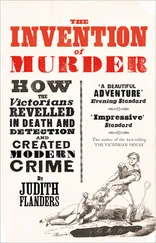At the same time advances in technology were changing more traditional aspects of home life. With improved sanitation and hygiene, child mortality was falling. The middle classes had more disposable income, and thus anxiety about the fundamentals of life – enough food, affordable light and heat – diminished. With the increase in child survival rates came coincidentally the gradual phasing out of the apprenticeship system for middle-class professions such as medicine and the law, which meant that for the first time many parents could watch their children reach adulthood in their own homes. The Romantic movement’s creation of the cult of innocence promoted an idealized view of childhood, and produced what has sometimes been referred to as ‘the cult of the child’: the child-centred home was developing.
That work was moving outside the home was the third essential factor in the creation of nineteenth-century domesticity. Previously, many of the working classes had found occupation in piecework, which was produced at home. With the coming of the factories, work moved to a place of regimentation and timekeeping. The middle classes too had been used to work at home: at the lower end of the scale, shopkeepers lived above their shops; slightly higher up, wholesalers lived above their warehouses. Doctors and lawyers had consulting rooms at home, as did many other professionals. Women who had helped their husbands with their work – serving in the shop, doing the accounts, keeping track of correspondence or clients – were now physically separated from their husbands’ labour and became solely housekeepers. Slowly the cities became segregated: those who could afford it no longer lived near their work. An early example was the suburb of Edgbaston, on the edge of Birmingham, planned in the early part of the century by Lord Calthorpe to provide ‘genteel homes for the middle classes’, and proudly known as the ‘Belgravia of Birmingham’. Its homes were for the families who owned and ran the industries on which the town thrived – but who did not want to live near them. The leases for houses in Edgbaston were clear: no retail premises were permitted, nor was professional work to be undertaken in these houses. Edgbaston was the first residential area that assumed that people wanted to live and work in different locations. 6 Over the century this same transformation occurred across the country. In London the City became a place of work, the West End a place of residence; gradually, as the West End acquired a work character too, the suburbs became the residential areas of choice.
Charles Dickens, the great chronicler of domestic life in all its shades, was well aware of the perils of promiscuous mixing of home and work. In Dombey and Son (1848) Mr Dombey, the head of a great shipping company, is unable to leave his business behind him when he returns home. His only thoughts are of ‘Dombey and Son’ and, by allowing his work life to contaminate his family life, he destroys the latter – and, by extension, the former. In Great Expectations (1860–61) the law clerk Wemmick bases his life entirely on the separation of work and home: ‘the office is one thing, and private life is another. When I go into the office, I leave the Castle [his house in the suburbs] behind me, and when I come into the Castle, I leave the office behind me … I don’t wish it professionally spoken about.’ 7 That the fictional Mark Rutherford, nearing the end of the century, thought no differently confirmed that this attitude was not simply a jeu d’esprit of Dickens. William Hale White (1831–1913) wrote a series of supposedly autobiographical books under the name Mark Rutherford. White was a dissenter who had trained for the ministry before he lost his faith; he then became a civil servant at the Admiralty. His alter ego, Rutherford, was also a minister who lost his faith. About his private life Rutherford wrote that at the office ‘Nobody knew anything about me, whether I was married or single, where I lived, or what I thought upon a single subject of any importance. I cut off my office life in this way from my home life so completely that I was two selves, and my true self was not stained by contact with my other self. It was a comfort to me to think the moment the clock struck seven that my second self died.’ 8
That ‘true self’ was the real man, on view only at home. Ruskin’s father wrote, ‘Oh! how dull and dreary is the best society I fall into compared with the circle of my own Fire Side with my Love sitting opposite irradiating all around her, and my most extraordinary boy.’ 9 With this the good Victorian was supposed to – and often did – rest content For, as the clerk Charles Pooter put it so eloquently in The Diary of a Nobody (1892), George and Weedon Grossmith’s comic masterpiece of genteel English anxiety. ‘After my work in the City, I like to be at home. What’s the good of a home, if you are never in it?’ 10 Mr Pooter’s ideal of the good life, recounted in diary form, centred on his dream house in the suburbs.
In continental Europe the opposite was happening. The Goncourt brothers wrote in their diary in 1860, ‘One can see women, children, husbands and wives, whole families in the café. The home life is dying. Life is threatening to become public.’ 11 Europeans socialized in public: in restaurants (a French invention), in cafes (perfected by the Viennese), in the streets (Italians still perform the passeggiata in the evenings). But the English became ever more inward-turning. The small wrought-iron balconies that had decorated so many Georgian houses vanished, seemingly overnight. Thick curtains replaced the airy eighteenth-century windows, as much to block out passers-by who might look in as to prevent the damage wrought by sun and pollution.
For the house was not a static object in which changing values were expressed. In the eighteenth century and before, rooms had been multi-purpose, and furniture had been moved and adapted to serve the different functions each room acquired in turn. (The French for ‘building’ and ‘furniture’ are a legacy of this: immeuble is a building or, literally, ‘immovable’, and meuble, furniture, is literally, ‘movable’.) Now, in the nineteenth century, segregation of each function of the house became as important as separation of home and work: both home and work contained an aspect of both a public and a private sphere. The house was the physical demarcation between home and work, and in turn each room was the physical demarcation of many further segregations: of hierarchy (rooms used for visitors being of higher status than family-only rooms); of function (display rating more highly than utility); and of further divisions of public and private (so that rooms which were used for both public and private functions, such as the dining room, changed in importance with their use). ‘Subdivision, classification, and elaboration, are certainly distinguishing characteristics of the present era of civilisation,’ thought George Augustus Sala in 1859. * 12
In the eighteenth century and before, servants and apprentices had often slept in the same rooms as family members, who themselves were not separated in sleeping apartments by gender or age. Gradually the Victorian house divided rooms that were designed for receiving outsiders – the dining room, the drawing room, the morning room – from rooms that were for family members only – bedrooms, the study – and, further, from rooms that were for servants only – the kitchen, the scullery, servants’ bedrooms. Parents no longer expected to sleep with their babies, and children no longer slept together – boys and girls needed separate rooms, at the very least, and it was preferable that younger children be separated from older ones. The additional rooms required were of necessity smaller, and higher up, but the extra privacy made them desirable. Even those forced to live in houses small enough to require multi-purpose rooms felt that ‘Nothing conduces so much to the degradation of a man and a woman in the opinion of each other’ than having to perform their separate functions together in the same room. This was written by Francis Place, a radical tailor. When he managed to reach a financial level where he and his wife could afford to live with enough space so that they could work separately, ‘It was advantageous … in its moral effects. Attendance on the child was not as it had been always, in my presence. I was shut out from seeing the fire lighted, the room washed and cleaned, and the cloathes [ sic ] washed and ironed, as well as the cooking.’ 13
Читать дальше












